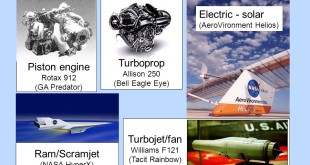A rocket can be an aircraft, spacecraft, missile, or vehicle which generates thrust. Spacecraft themselves then use their own propulsion systems to adjust their orbits around Earth, travel through space, or make carefully controlled landings on the surfaces of other planets. Thrust is generated by the propulsion system of the …
Read More »DARPA MiniTherms3D Program: Advancing Military Systems with Innovative Thermal Management Solutions
Introduction In the fast-paced world of military technology, high-performance systems with size, weight, and power (SWaP) constraints pose unique challenges. One critical aspect that often demands innovative solutions is thermal management. With the advancement of cutting-edge military applications, such as artificial intelligence, sensor networks, and autonomous vehicles, the need for …
Read More »Quantum Propulsion: Revolutionizing Interplanetary Space Propulsion with Light-Thrust Engines
Introduction The dream of exploring the cosmos beyond our solar system has captivated the imagination of scientists, visionaries, and space enthusiasts for decades. However, the vast distances and limitations of traditional rocket propulsion have posed significant challenges to interstellar travel. Enter quantum propulsion and its revolutionary concept of light-thrust engines, …
Read More »Wireless Power Unleashed: DARPA’s Whisper Beam for UAV Swarm Operations
Introduction In recent years, Unmanned Aerial Vehicles (UAVs), commonly known as drones, have rapidly evolved from niche technology to indispensable tools for various industries and military applications. However, one of the most significant challenges for UAVs has always been their limited flight time due to onboard battery constraints. To overcome …
Read More »Ensuring Energy Security in a Rapidly Evolving Energy Industry: Challenges and Solutions
Energy is essential to modern society, as it powers our homes, industries, and transportation systems. Without energy, we would not be able to sustain our current standard of living, and many of the technologies and conveniences that we take for granted would not exist. The importance of energy will only …
Read More »UAV Propulsion Technologies: Fueling Long-Endurance Commercial and Military Missions
Introduction Unmanned aerial vehicles (UAVs) have evolved from hobbyist toys to critical tools with applications spanning across various industries. As the demand for UAVs with extended flight endurance continues to grow, propulsion system technologies have risen to the challenge. This blog article explores how cutting-edge UAV propulsion systems are enabling …
Read More »Super Capacitors: Powering Innovations from Electric Transport to Military Directed Energy Weapons
Introduction: In the world of energy storage, supercapacitors have emerged as a game-changing technology. With their unique properties and capabilities, they are revolutionizing diverse sectors, ranging from electric transport to military applications like directed energy weapons. In this blog article, we will explore how supercapacitors are fueling innovations in these …
Read More »Exploring the Future of Renewable Energy: Bio-Solar Cells
Introduction: As the world faces the pressing challenge of transitioning to sustainable and renewable energy sources, scientists and researchers are continuously exploring innovative solutions. Among the emerging technologies, bio-solar cells have gained attention as a promising avenue for generating clean energy. In this article, we delve into the fascinating world …
Read More »Unleashing the Power of Energy Harvesting: Technology, Applications, and Market Dynamics
Introduction: In our quest for sustainable and efficient energy solutions, we often overlook the untapped potential that surrounds us. Energy harvesting, a cutting-edge technology, aims to harness and utilize ambient energy sources to power a wide range of applications. This article explores the remarkable world of energy harvesting, delving into …
Read More »Green hydrogen: an alternative that reduces emissions
As the world grapples with the urgent need to reduce greenhouse gas emissions and combat climate change, finding clean and sustainable energy sources has become paramount. In this quest, green hydrogen has emerged as a promising alternative. Produced through renewable energy sources and water electrolysis, green hydrogen offers a pathway …
Read More » International Defense Security & Technology Your trusted Source for News, Research and Analysis
International Defense Security & Technology Your trusted Source for News, Research and Analysis



